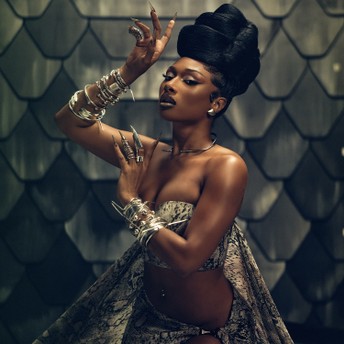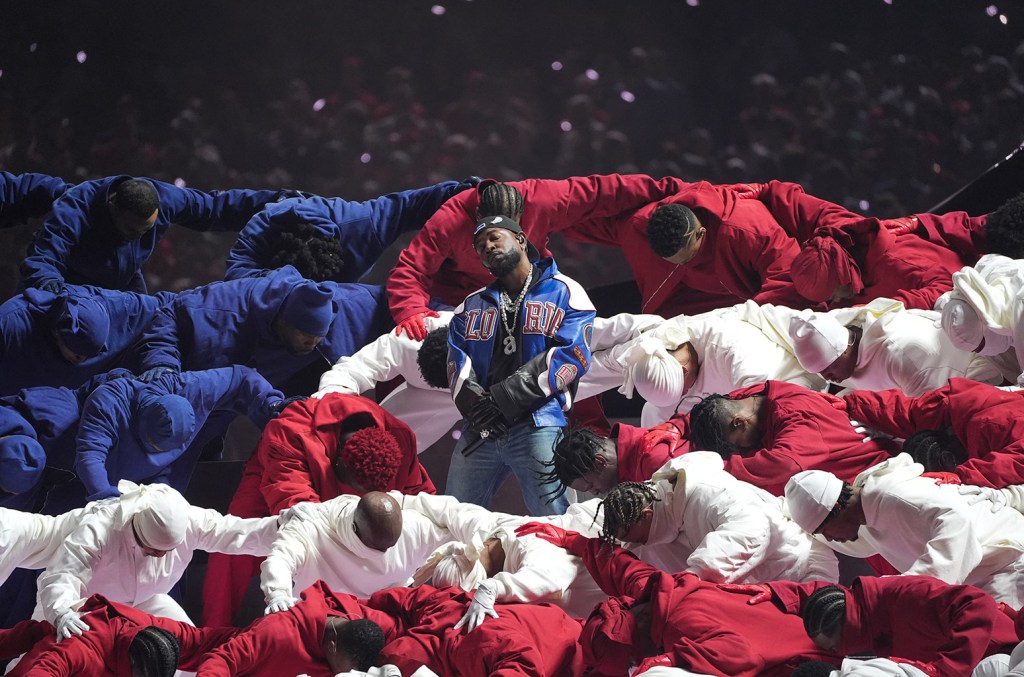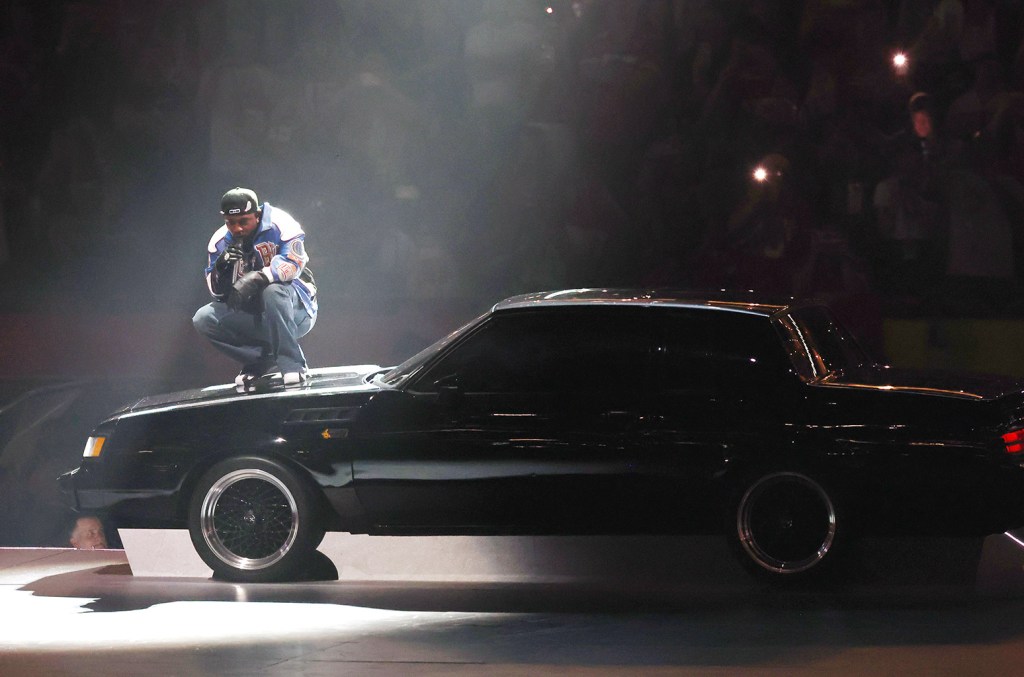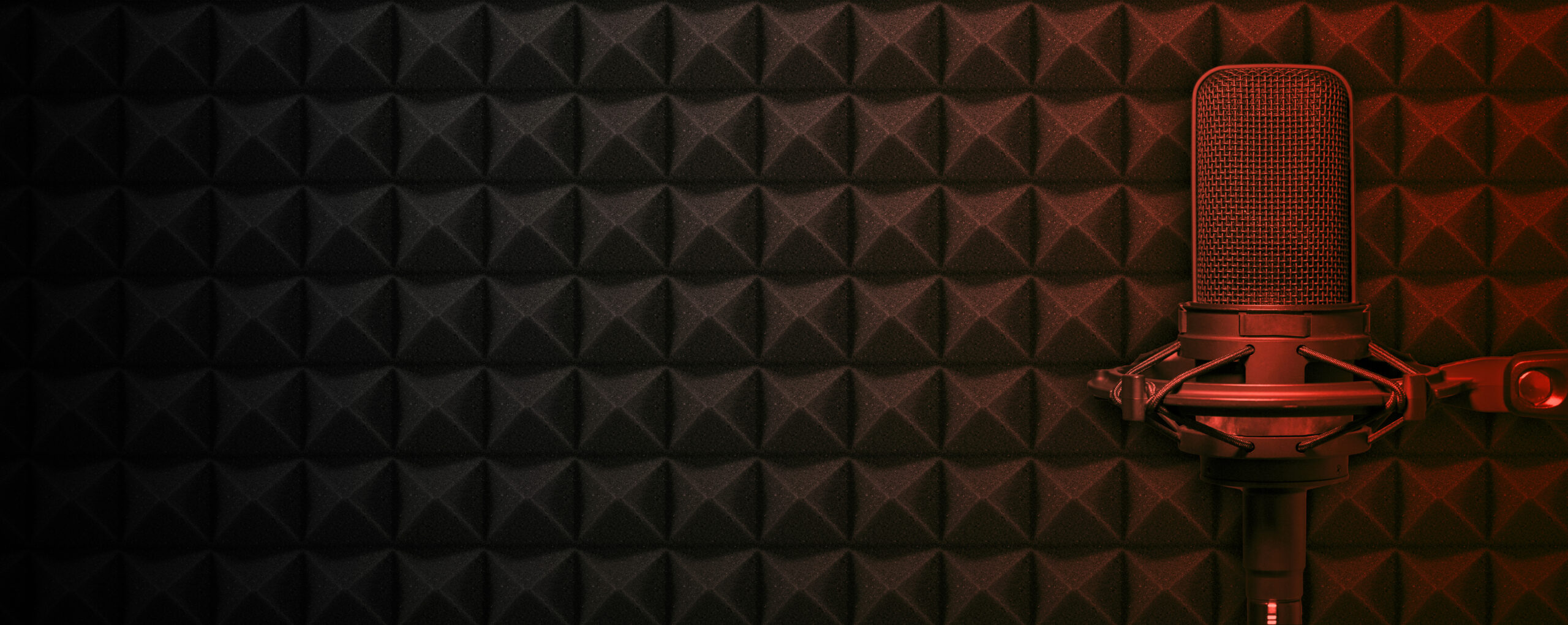Super Bowl Halftime Show

Trending on Billboard
Legendarily prolific actor Samuel L. Jackson had no problem saying yes when he was asked to join Kendrick Lamar for the Grammy and Pulitzer prize-winning rapper’s Super Bowl LIX halftime show in February in New Orleans. And while Jackson thought he was signing up for another one of his eclectic acting gigs, the Tulsa King co-star told Jimmy Kimmel on Monday night (Nov. 17) that he had no idea he was signing up to be a surprise guest at a “revolution.”
Explore
See latest videos, charts and news
“Great time. I kind of had no idea when they called me and said, ‘Yeah, we’d really like for you to be part of Kendrick’s halftime show’… I was like ‘really?,’” Jackson recalled thinking at the time. When the show’s producers promised to send him the treatment for the show, consummate professional Jackson said he didn’t really care about all that and promised to be there when they needed him.
“And then when I got there and we were rehearsing, it was all kind of nice and fun and watching the dancers go through their routines,” he described. “It’s like, ‘damn! They’ve been rehearsing for a while, because they were like [snaps fingers.]’” In case you forgot, Jackson popped in dressed in a red, white and blue Uncle Sam outfit to welcome the crowd with the enthusiastic greeting, “your uncle… Sam and this is the great American game!”
Jackson said he had “no idea” about what was about to take place until dress rehearsal for what would become the most-watched halftime show in history, one in which he would provide Greek chorus-like commentary on the racial state of the nation. “That was the first time I knew we were doing a revolution,” Jackson said of the eye-popping spectacle at the Caesars Superdome that featured guest stars SZA, tennis great Serena Williams crip walking and record producer Mustard.
“I knew I was dressing as Uncle Sam, but I just thought that was like, okay, fine, it’s an Uncle Sam thing,” Jackson said. “When dress rehearsal starts I’m there I’m doing it and I turn around and I said, ‘wait a minute, that’s a flag… they’re making a flag up there,” he recalled of the sight of the mass of dancers in red, white and blue forming into the American flag. “Oh, now I’m going, ‘ah, now it’s revolutionary.’” He said it never occurred to him before that moment that the dancers would be activated into Old Glory, especially since a lot of people already call him “Uncle Sam” on the regular.
Jackson, who has worked with rappers before, including LL Cool J and Busta Rhymes, also famously appeared in the 1992 crime drama Juice alongside late rap icon Tupac Shakur in his first major role in a film. The actor, who had met Shakur before, said he was a “nice enough kid,” but recalled an incident on set that might surprise fans familiar with Jackson’s legendarily NSFW dialogue.
On a night when Jackson wasn’t shooting, his wife, actress LaTanya Jackson was sitting in a room with the mothers of the other kids who appeared in the film and “Tupac came through there and he was cussing somebody out and yelling, screaming.” So LaTanya Jackson grabbed Shakur and told the rapper, “‘Hey, don’t you see all the grown women, you can’t talk like that and use that kind of language!’ And everybody in the room was like [big inhale]. And he totally apologized [and said] ‘I’m so sorry.’” From that point on, Jackson said, Tupac was a gentleman and whenever he saw the actor’s wife he would greet her with, “‘Hey mom, how you doing?’”
Kimmel said it did strike him as odd that Jackson’s wife had a problem with foul language given his f-bomb proclivities. “Only in a room full of grown women,” Jackson explained, with Kimmel confirming that scripted cursing is seemingly okay with her. “If I’m at home, it’ my house,” Jackson explained. “I can say what I want to.”
Watch Samuel L. Jackson on Jimmy Kimmel Live! below.

Trending on Billboard Megan Thee Stallion says that she is dying to take the stage at the Super Bowl halftime show. In an interview with US Weekly, Meg said she would love the challenge of performing at what is traditionally the most-watched musical TV performance of the year. “I’m manifesting a Super Bowl halftime performance […]

Trending on Billboard Marc Anthony will “definitely” be at the Super Bowl LX to cheer on his friend and fellow hitmaker, Bad Bunny, who is headlining next year’s halftime show. The Puerto Rican salsa star spoke with Rolling Stone about the significance of Bad Bunny’s upcoming Super Bowl performance and some words of advice he’s […]
Trending on Billboard
Despite the challenge flags thrown by Donald Trump and some fellow Republicans, Jay-Z is 100% firm in his support for Bad Bunny playing the Super Bowl halftime show next year. Amid criticism from the President and a number of commentators on the right decrying the choice of one of the world’s most popular artists to play at the game in February, Jigga — whose Roc Nation has been tasked with booking the most-viewed musical TV performance of the year since 2019 — told TMZ that he is unwavering.
Explore
See latest videos, charts and news
When asked by a TMZ photographer about the hate coming Benito’s way, Jay reportedly told the site that the Puerto Rican superstar is way more beloved in the U.S. than some would have you think. “They love him. Don’t let them fool you,” Jay said.
After Roc Nation tapped Benito in late September, Trump reacted a week later with disdain, claiming to conservative outlet Newsmax, “I’ve never heard of him… I don’t know who he is. I don’t know why they’re doing it, it’s, like, crazy.” In addition, Homeland Security Sec. Kristi Noem threatened that U.S. Immigration and Custom Enforcement (ICE) agents will be “all over the place at the Super Bowl.
While Trump seems unlikely to watch the game, NFL commissioner Roger Goodell has no misgivings about the booking. “He’s one of the leading and most popular entertainers in the world,” Goodell told CBS Sports. “That’s what we try to achieve. It’s an important stage for us. It’s an important element to the entertainment value. It’s carefully thought through.” To be fair, the commish added, he doesn’t think the league has ever “selected an artist without some blowback or criticism.”
Turning Point USA, an ultraconservative youth organization founded by the late activist Charlie Kirk, has announced its intention to host an alternate halftime show out of protest; a line-up for that show has not yet been announced.
Though Trump claimed to have never heard of Bad Bunny, the singer’s chart bona fides speak for his broad appeal. Benito holds records as the first Latin artist to have 100 career Billboard Hot 100 songs, as well as having the first all-Spanish album to reach No. 1 on the Billboard 200 album chart (2020’s El Ultimo Tour Del Mundo). He has also tied Taylor Swift for having the most No. 1s on the Billboard Global 200 of any solo artist, has rolled up nearly 80 million Spotify listeners over his career and was ranked the most-streamed artist on Spotify three years running (2020-2022).
Super Bowl LX will air live on Feb. 8 at 6:30 p.m. ET and be broadcast on NBC and Telemundo and stream on Peacock and NFL+.

Trending on Billboard
The NFL is standing by Bad Bunny as next year’s Super Bowl Halftime Show headliner, regardless of the controversy surrounding the decision.
While speaking to press on Tuesday (Oct. 21), the league’s commissioner, Roger Goodell dismissed questions about whether the NFL would reconsider the selection of Benito to perform at the big game in February. “He’s one of the leading and most popular entertainers in the world,” he said, according to CBS Sports. “That’s what we try to achieve.”
“It’s an important stage for us,” Goodell continued. “It’s an important element to the entertainment value. It’s carefully thought through.”
He also pointed out: “I don’t think we’re ever selected an artist without some blowback or criticism.”
The commissioner’s comments come amid backlash from certain people — primarily MAGA conservatives — who have taken issue with the choice of a Spanish-speaking musician to perform at halftime. President Donald Trump called it “absolutely ridiculous,” while White House advisor Corey Lewandowski said, “It’s so shameful they’ve decided to pick somebody who seems to hate America so much to represent them at the Halftime Show.”
The chart-topping singer-rapper — who is from Puerto Rico, an unincorporated territory of the United States — has never indicated that he hates America. He has, however, expressed his hesitance to tour in the U.S. due to concerns that ICE might target his audiences, a fear that Lewandowski further stoked by adding in an October interview that immigration enforcement agents would be present at the Super Bowl.
“There is nowhere you can provide safe haven to people who are in this country illegally,” the advisor said at the time. “Not the Super Bowl and nowhere else. We will find you and apprehend you and put you in a detention facility and deport you.”
Turning Point USA, an ultraconservative youth organization founded by the late Charlie Kirk, also announced its intention to host an alternate halftime show out of protest.
But while there is a loud and vocal group speaking out against Bad Bunny’s appointment as 2026 halftime headliner, countless others — from Shaboozey to Jennifer Lopez — have shared how excited they are for Benito’s performance. Shakira also recently said, “It’s the perfect moment for a performance like this.”
She added in an interview with Variety, “I’m so proud that Bad Bunny, who represents not only Latin culture, but also how important Spanish language music has become on a global scale and how universal it has become, is getting to perform on the biggest stage in the world.”

Trending on Billboard
Shakira is ready for Bad Bunny to headline the 2026 Super Bowl Halftime Show — but she says the Puerto Rican superstar should have been tapped for the gig a long time ago.
When asked about the news that Benito will perform at the big game in February during a Variety interview published Tuesday (Oct. 21), Shakira replied, “It’s about time!”
“I’m so proud that Bad Bunny, who represents not only Latin culture, but also how important Spanish language music has become on a global scale and how universal it has become, is getting to perform on the biggest stage in the world,” she continued. “It’s the perfect moment for a performance like this. I can’t wait to watch it.”
Benito previously performed on the Super Bowl stage as a guest artist alongside joint headliners Shakira and Jennifer Lopez. They performed part of their set in Spanish, which Shak told the publication was a “bold move” at the time.
“Acceptance of Spanish-language music as part of the mainstream has come so far from when I started,” she added. “I hope and like to think that all the times my music was met with resistance or puzzlement from the English-speaking world before it was embraced, helped forge the path to where we are now.”
It’s true that millions of fans are excited to see Bad Bunny perform at Levi’s Stadium in Santa Clara, Calif., next year, but his appointment as Super Bowl Halftime Show headliner has also received backlash — primarily from political conservatives, who take issue with the fact that the singer-rapper’s music is all in Spanish. President Donald Trump called the choice “absolutely ridiculous,” White House advisor Corey Lewandowski claimed Benito “hates America” — despite the fact that the musician is an American citizen — and Turning Point USA announced plans to host an alternate, MAGA-approved halftime program.
But, as Billboard‘s chief content officer of Latin/Español Leila Cabo pointed out, there is nothing inherently political about the selection of Bad Bunny for halftime. “As those of us who speak Spanish daily can attest, many still look down on Spanish as a language, and definitely on the people who speak it,” she wrote in a recent op-ed. “Let’s acknowledge that having Bad Bunny headline the Super Bowl is a bold choice — but let’s also be real about the reasons.”
Shakira’s latest interview comes amid her 30th anniversary celebrations of her album Pies Descalzos, as well as the 20th anniversary of Oral Fixation, Vol. 1. Elsewhere in her conversation with Variety, she shared which Gen-Z star she’d love to collaborate with on a reimagined version of one of her Oral Fixation tracks.
“I would love to hear Chappell Roan on ‘La Pared,’” she said. “I think she would do an incredible rendition. Her voice and her artistry are incredible.”
Billboard’s Live Music Summit will be held in Los Angeles on Nov. 3. For tickets and more information, visit the event’s website.

“The revolution ‘bout to be televised, you picked the right time but the wrong guy,” proclaimed Kendrick Lamar atop the hood of a black GNX at the onset of his Super Bowl LIX halftime show performance on Sunday night (Feb. 9).
Lamar’s referencing (and revising) of Gil-Scott Heron’s landmark 1971 recording “The Revolution Will Not Be Televised” and his misgivings at being propped up as a leader in this century’s fight for justice cast his halftime performance squarely in the “I am not your savior” light of 2022’s Grammy-winning Mr. Morale & the Big Steppers. But his performance also tested the limits of how much we should praise and applaud subtly subversive imagery during an increasingly fascistic period that calls for more drastic measures, let alone bigger and bolder statements. His rousing, technically impressive performance also raised the question of how much revolution Kendrick could possibly hope to represent, spark, or speak for while being platformed on a stage meant first and foremost to serve the pre-existing establishment.
Three short years after performing cuts from his first two major label studio albums at the Dr. Dre-curated 2022 Super Bowl halftime show, Lamar was named the first solo rapper to ever headline the show. Entering the Superdome as rap’s undisputed king following last year’s explosive and historic battle with Drake, Lamar also boasted five of the 30 biggest songs in America on that week’s Hot 100. His GNX album remained parked in the uppermost reaches of the Billboard 200, and his forthcoming SZA-assisted Grand National joint tour will take him to stadiums across North America (and now the U.K. and Europe) for the very first time. And, of course, there’s also the matter of the prior Sunday’s Grammys (Feb. 2), which found Lamar sweeping all five categories he was nominated in for “Not Like Us,” including record and song of the year – his first General Field wins, and just the second time a hip-hop song has triumphed in either category.
Trending on Billboard
With 13,000 voting members of the Record Academy crowning a vicious diss track the best-written and produced song of the year, Lamar entered new territory for a rapper. With the self-deconstructing Mr. Morale in his rearview and the Super Bowl on the horizon, Lamar would bring his career-long battle between his politics, his celebrity and his personhood to his biggest stage yet – the final boss level of the video game that would unfold throughout his performance, if you’re willing to extend him that much credit.
In the first 30 seconds of his set, Lamar established his “great American game” metaphor in several different ways. As the camera captured a wide shot of the audience light displays in the stadium, the field lit up in the square-triangle-X-circle button combo of a standard PlayStation controller. The visual helped him move from set to set intentionally – only the two SZA collaborations are performed on the button stages – while also driving home the fact that we’re all getting played by America, some of us in multiple ways at the same time.
But no matter how big e-sports and video games get, this is the Super Bowl — and we’re on a football field, a setting that has an unsettling yet unmistakable connection to the slave plantation. “The power relationship that had been established on the plantation has not changed,” journalist William C. Rhoden writes of professional sports in his illuminating book Forty Million Dollar Slaves: The Rise, Fall, and Redemption of the Black Athlete. “Even if the circumstances around it have.” In a 2018 episode of The Shop, LeBron James called NFL team owners “old white men” who have a “slave mentality” towards players. Three years later, in his 2021 Colin in Black and White Netflix series, former San Francisco 49ers quarterback Colin Kaepernick likened the NFL draft to slavery. From the slave plantation to mass incarceration, one of America’s favorite pastimes – or games, if you will – is figuring out how to exploit and control Black labor. Later in Kendrick’s show, the set morphed into a prison yard, again underscoring that history.
Here’s the thing: nearly a decade after Ava DuVernay’s prison-industrial complex-explaining 13th documentary and half a decade after summer 2020 protests following the murder of George Floyd seemed to signal a cultural tipping point, the imagery of scores of Black male dancers forming an American flag – albeit one split down the middle, with Kendrick as something of a neoliberal aisle-crossing Moses figure in the center – feels more tired and trite than poignant. If that’s too harsh a reading, perhaps you could say that Lamar is levying his braggadocio against both the NFL and America. He’s telling these institutions to “be humble,” while explicitly centering the Black men who provide them their strength, notoriety and wealth.
If the great American game has always been the ruthless exploitation of Black people, then the great Black American game is finding ways to continue to exist and thrive in America despite all the contradictions that brings. This is the tension that complicates Lamar’s halftime performance and, ultimately, makes it one of the most compelling ones in the tradition’s history. Can subversive images of Black Americana and calls for “revolution” hold any water when they’re broadcast on the country’s most commercialized and capitalistic stage?
In a nod to the Uncle Sam character of 2015’s To Pimp a Butterfly and the Dolomedes character in Spike Lee’s Chi-Raq (2015), Lamar tapped America’s favorite Black uncle to narrate the show. Oscar-nominated acting legend Samuel L. Jackson – dressed as Uncle Sam, the centuries-old personification of America — played a nervous elder preoccupied with the false promise of respectability politics, serving as narrator and helping the set transition between its two modes: GNX-induced myopia and classic crowd-pleasers like “Humble” and “DNA.” Together, Lamar and Jackson blended Uncle Sam with Uncle Tom, a term originating from Harriet Beecher Stowe’s 1852 novel Uncle Tom’s Cabin that refers to Black Americans who willingly betray their community in favor of bowing to white Americans.
But before Lamar and Jackson extrapolate that discography tension for a larger commentary on being Black in America, Lamar momentarily sidesteps the game metaphor in the set design, opting to begin rapping an extended snippet of an unreleased GNX track.
Once Lamar descended from the car’s hood to begin “Squabble Up” — his most recent GNX Hot 100 chart-topper – he finally introduced the meatiest part of his “great American game” metaphor, navigating life while being Black in America. For Lamar, after spending most of his catalog exploring that tension in the context of his childhood and personal life, the Super Bowl was a chance to play with those contradictions in the context of his position as one of the preeminent artists and performers of our time. Guided and deterred by Uncle Sam Jackson’s pleas for hits like “Humble” and more palatable fare like “All the Stars,” Lamar’s setlist wove through his most universal anthems and chilly L.A.-heralding GNX deep cuts like “Peekaboo,” which featured some of the most impressive camerawork of the night. The theatrical approach was a fresh one for the Super Bowl halftime show — and a choice that saved the set from crumbling under the weight of its own subtlety.
After all, Uncle Sam Jackson dangled the point in front of 133.5 million viewers when he said: “Too loud! Too reckless! Too ghetto! Mr. Lamar, do you really know how to play the game? Then tighten up!”
By the time he got to “Man at the Garden,” Lamar’s backup dancers were dressed in red, white or blue monochromatic fits to assist his attempts at subverting the iconography of the American flag. During “Garden,” the group of men that surround Lamar don light wash jeans, white sweats, and no beanies – letting their afros, locs, and beaded braids shine alongside their golden grills. This is Black Americana through Lamar’s lens and it’s the most beautiful part of the show; the brotherhood and joy in this scene feel almost antithetical to how the world has been socialized to perceive Black male features and fashion. It’s not necessarily revolutionary, but it would be petty to not acknowledge the power of seeing this image of Black American men on a field that makes money off the battering of their bodies as a slew of white owners hold near-total control of the capital they generate.
Then again, what’s the value of this image if it’s being broadcast during an NFL-sanctioned performance? If the institution that’s allegedly being critiqued is willfully allowing that “critique” to air around the world, doesn’t it mean that they’re in on it? Or that they’ve deemed the critique too harmless of a threat to waste resources trying to thwart? The answer is clearly, “Yes” – as evidenced by the performer who was promptly tackled and detained by security after flashing the Flags of Palestine and Sudan during the performance; he’s now banned from NFL events and venues for life.
Of course, the song on everyone’s mind – including Lamar’s since he pulled two fake-outs set to the track – was “Not Like Us.” Uncle Sam Jackson tried his best to keep things “nice and calm” as “America wants,” but Lamar went for the jugular – because that’s what America really wants. This is the same country that elected a president (who was in attendance Sunday night) with chillingly fascistic tendencies, and the ones that turned “Not Like Us” into a billion-streaming multi-week chart-topper. He’s the first solo rapper to headline the Super Bowl halftime show and he kicked things off rapping unreleased music – clearly, Kendrick was not interested in following the usual headliner rules. And, yes, “Not Like Us” is his biggest pop hit, but it achieved that status while being a mid-battle diss track; K.Dot already reconfigured the pop game with the song’s success. So let the diss track ring.
And with a seismic medley of “Not Like Us” and “TV Off” — which featured a classic hip-hop moment in star producer Mustard’s surprise appearance – Lamar closed his show and declared “game over.” “It’s a cultural divide, Imma get it on the floor/ 40 acres and a mule, this is bigger than the music/ Yeah, they tried to rig the game, but you can’t fake influence,” Kendrick spat before finally launching into Drake-obliterating diss.
If this was just about the music, he would’ve played more hits. If this was just about Drake, he would’ve at least alluded to “Like That.” This was about seizing this historic moment to make as much of a statement as he could within the parameters set by the NFL, Apple Music, and the myriad networks airing the show. 160 years ago, Union General William Sherman proclaimed that plots of land no larger than 40 acres would be allotted to freed families. That promise was eventually reversed by President Andrew Johnson following the Civil War, and almost all of the reallocated land was returned to its pre-war white owners during Reconstruction. That shot to the heart of Black economic power and independence still rings today, and it’s a theme Kendrick explored heavily on Butterfly, hence the reappearance of that album’s Uncle Sam character.
When Lamar raps about the game being rigged and faking influence, he’s talking about shady music industry tactics, the very concept of the American dream, and, of course, Drake himself. And it’s that context – a Black American man who’s one of hip-hop’s most dedicated practitioners knocking out the Canadian actor-turned-rapper who helped change the face of hip-hop for better and for worse – that made the Super Bowl performance of “Not Like Us” such an astounding watch. Kendrick spent the past year telling us that he wanted to “watch the party die” because he feels hip-hop is under siege by people who aren’t part of the culture. On Sunday night, he was itching to get it back in blood on the Super Bowl stage.
After ripping through “TV Off,” Lamar flashed a s–t-eating grin and mimed clicking the power button on a TV remote. Immediately, the camera angle switches back to a wide shot of the stadium with the phrase “game over” written in lights. Kendrick told us he deserved it all, and he won it all. The Super Bowl halftime show game as we’ve come to know it is over, the Drake beef is over, the literal performance is over and the game of respectability politics that have hounded Black Americans for centuries are, in theory, now over.
But does it really work like that? Do any of these messages or images – like the “stars” of the American flag turning into brainwashed troops — really land when they’re being mounted during an event that consciously traded real action and change for the platitudes of musical and artistic representation? Don’t these images also lose their bite when they’re all rolled into a performance that is first and foremost an extended promotional spot for GNX (physical copies of the November release started shipping this weekend), SZA’s extended version of SOS: LANA (released hours before the halftime show) and their co-headlining Grand National Tour?
Maybe this all works if the “revolution” being televised is a Black capitalist rally. We’re aware Kendrick isn’t our savior, but if he’s going to televise self-proclaimed “revolutions,” are we in the wrong for expecting something more? And maybe that’s why he told us to “turn this TV off”; he made it clear from the onset that he was “the wrong guy” for this “revolution.” Lamar himself will not lead us to liberation – and he may never explicitly say anything or create any art that even gestures towards the harsh physical realities of that – but the images and covert messages in his performances (and his own pervasive commercial success) will hopefully spark something inside his younger viewers to begin their own self-liberation journeys in search for a brighter and more just future.
But doesn’t that sound like something we’ve been saying for too long? It’s definitely reminiscent of the conversation around Beyoncé’s 2016 Black Panther-nodding halftime performance. We can applaud Lamar for taking the risk to say anything at all within this moment of his peak commercial dominance, but we also don’t have to act as if it was genuinely revolutionary – because it simply can’t be in its present context. And that’s the conundrum Lamar had to maneuver as a Black performer in a historically white space on Sunday night.
Kendrick Lamar’s exploration of the great American game helped further expose the paradoxes of his own stardom and artistic ethos, but it also allowed him to revolutionize and remodel what can be done at a Super Bowl halftime show – even if none of it will actually set us free or give way to real, material change. He broke, rewrote and played by the rules all at the same time. And that’s the truest Black American game of all, finding a way to exist and thrive in a tsunami of contradictions.
Kendrick Lamar‘s Super Bowl LIX Halftime Show is officially the most-watched halftime show performance of all time, Roc Nation, Apple Music and the NFL announced on Tuesday (Feb. 11). “We’ve broken the record again! The most watched Apple Music Halftime show EVER, with 133.5 Million viewers,” the companies wrote on Instagram. Lamar’s halftime show performance drew a […]
02/11/2025
Check out all the answers from this year’s honorees, including Usher, WNBA star Angel Reese and football legend Shannon Sharpe.
02/11/2025
Kendrick Lamar and SZA are the latest stars to have this multi-platform triumph. Tony Bennett was the first.

 State Champ Radio
State Champ Radio 




